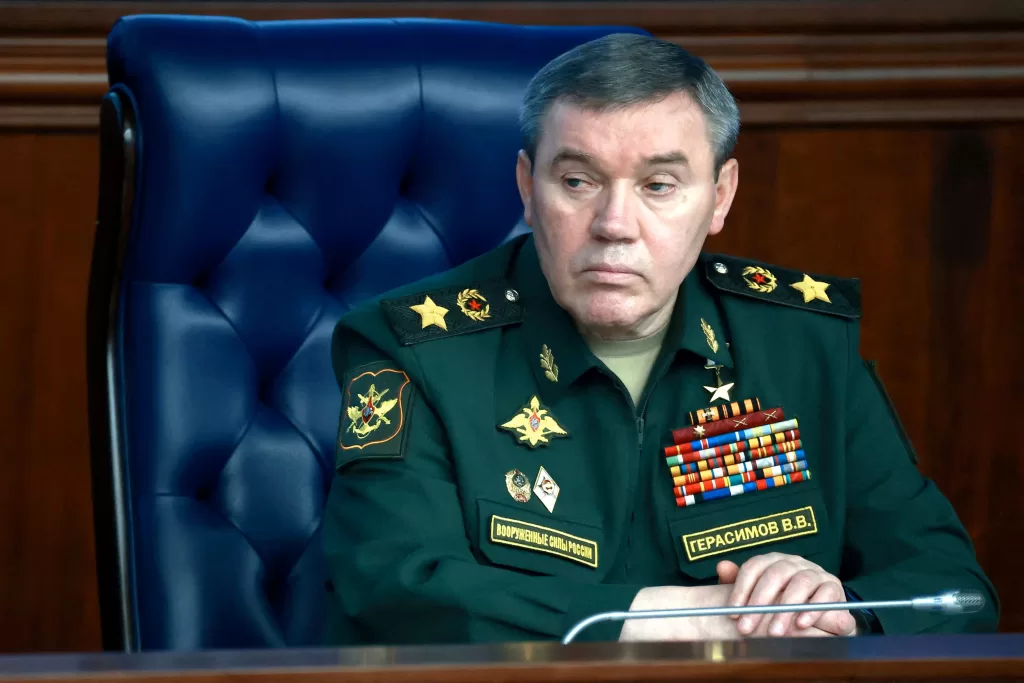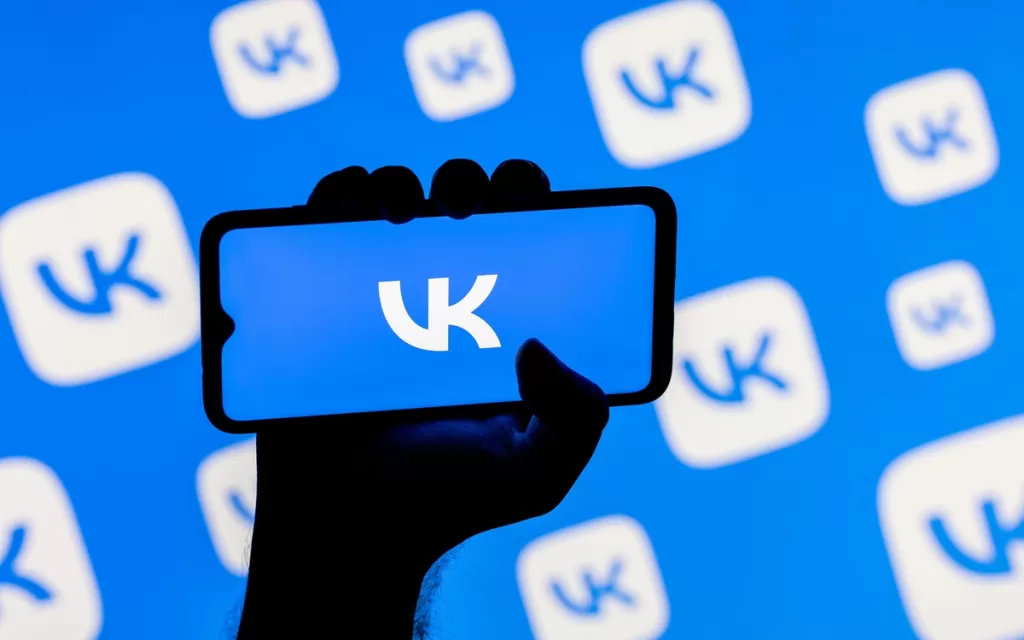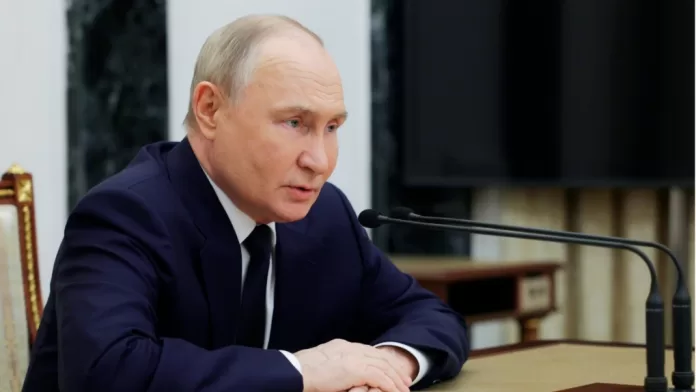“We surrendered this terrain some time ago, but now we are entering the game again,” stated Russian President Vladimir Putin as he acknowledged that in contemporary times the internet has a great impact in the geopolitical arena. Russia didn’t realize this earlier but now it has started utilizing information and cyberspace. The Crimean Crisis 2014 provides insight into the critical relationship between information operations and on-ground military engagement; the process of Crimea’s annexation was facilitated by the use of kinetic force, cyberspace utilization, and Information Operations hitting the physical, logical, and social elements of communications lines. To understand Russia’s information operations, it is significant to understand the Information warfare doctrine. Russia conducted information and psychological operations through means of social media, mainstream media, cyberattacks, spread of disinformation, manipulating public opinions, and exerting psychological pressure on Ukrainian officials. When information and psychological operations were combined with kinetic force, it resulted in the annexation of Crimea.
Development of Russia’s Information Warfare Doctrine
Russia’s information warfare doctrine was established in response to new-generation Western warfare notions. This type of warfare is also employed to explain the necessity to “respond with war to the information war waged against Russia.” The annexation of Crimea, as well as the accompanying media warfare, were the result of an approach focused on building the state, recreating Russia’s domains of influence, and mobilizing the population which has been implemented regularly for years. It has also been carried out in combination with the policy described in the Information Security Doctrine in the year 2000, which cites amongst the primary dangers the propagation of disinformation regarding Russia and the country’s federal institutions.

General Valery Gerasimov, Chief of the General Staff of the Russian Federation, described the features of the new kind of warfare used in Crimea. This is a type of warfare in which the distinctions among peace and conflict, foreign forces, and local self-defense forces are blurred, and the primary combat field has shifted from a physical environment to the hearts and minds of the people under discussion. Crimea may be viewed as an experiment for Russia in testing this new type of warfare in which hybrid, asymmetrical warfare, integrating a prolonged media campaign, cyber warfare, and the utilization of exceptionally skilled Special Operation Forces, plays an important part. The presidential programs developed in recent years have also been utilized to counter ‘information warfare’ towards the Russian Federation.
President Putin has used programs such as “Building a Positive Image of the Russian Federation,” “Improving Russian Information Security,” as well as “Building a Single Information Space in Russia” to boost the civil sense of identity among the Russian Federation’s ethnically diverse people. General Aleksandr Mikhailov summarized the Crimean Annexation by specifying the exact date of Ukraine’s loss which was March 1. The referendum was conducted on this day. General Aleksandr highlighted the essential components of the ‘Crimean’ information operation: the psychological component, President Putin’s direct engagement, intimidation, and sanctions. Professor Panarin stated in his discussion on the VKontakte portal that the Crimean War was an example of a ‘defensive’ information war. He recognized that this was a combination of cyber, kinetic, economic, and diplomatic efforts planned and coordinated effectively.
Unannounced Crimean War: Psychological Pressure
The Crimean War wasn’t ever declared. Military action, sparked by the Russian army quickly capturing Crimea, ultimately drove the Ukrainian armed forces to either change sides or abandon their positions in what was nominally a time of calm. The fact that there have been no conflicts between the armed forces of Russia and Ukraine is significant. The Russian military or more precisely the Special Forces, besieged military installations, held Ukrainian soldiers captive without adequate information accessibility, and relied on orders from the shaky temporary administration in Kyiv.
It exerted a psychological strain on the Ukrainian army. The Russian army’s combat-readiness assessments and short-notice military drills close to the Ukrainian border put further pressure on Ukraine. Through the formation of self-defense groups in Crimea to assist the Russian army in military operations, armed people were brought into the fight. The false data that Russian Foreign Minister Lavrov revealed suggested that the armed individuals wearing uniforms devoid of insignia were Crimean self-defense units or residents and that the Russian armed personnel of the Black Sea Fleet were at their stationed areas. The accomplishment of Russia’s objectives in Crimea depended heavily on its capacity to organize and employ civilians.
Information Warfare: Cyberattacks
Cyberattacks against media outlets and telecommunications infrastructure appear to have led to a transmission blackout, and other cyberattacks targeted at swaying the opinions of both national and international viewers were particularly noticeable in the annexation of Crimea. Russia also gained knowledge regarding the best possible times for cyberattacks, which are widely regarded as a first-strike strategy for maximum impact, especially when targeting significant targets like vital facilities. Russia was able to shut down nearly all of the state-run websites in Ukraine and interfere with the vital communication lines of the Ukrainian soldiers deployed in Crimea as Russian forces prepared to annex the region. Before Russian armed forces invaded Crimea, it attempted to damage Ukrainian government-run websites, halted communication by hitting the country’s critical communication lines, and blocked the phone connections of Ukrainian civil and military personnel. Certain attacks also caused damage to social media and news outlets.
The unidentified attackers who broke into Ukrtelecom’s premises caused the entire network to stop. When Ukrainian mainstream media transmissions collapsed, this created an ideal setting for annexation. During the Ukrainian conflict, the Cyber Berkut (ОиѱерБеркyт) a pro-Russian ‘’hacktivist’’ organization played a significant role in the cyberwar. The group vowed to oppose the present Ukrainian administration, claiming that it promoted nationalism and neo-fascism and that its actions aligned with the Russian narrative. One particular instance was Cyber Berkut’s strike against the NATO Cooperative Cyber Defence Centre of Excellence.
Cyber Berkut’s stances regarding its service were that it took part in propaganda campaigns via mainstream media, shut off objective sources of information, and helped the government cover up its criminal actions. Even seemingly harmless cyber incidents, such as distributed denial of service (DDoS) attacks, website hacking, or the indication system has been compromised, might have a greater impact on ordinary people with no technical expertise. It led to mistrust in the people. Mistrust was further increased when Russia curtailed the accessibility to information by carrying out an information blackout.
Psychological Operation: Use of mainstream media
To deceive the international community and to maintain a perception that Russia does not curtail press freedom, Russia allowed only a handful of independent media outlets to continue working even though in reality these media outlets were not objective. Russia continued to maintain its control over media transmissions. Journalists who played their part in Russia’s information campaign were acknowledged by President Putin in the aftermath of the Crimean War. These journalists/editors/directors/ television hosts were awarded medals of Order of Service to the Fatherland. Vladimir Putin stated that the media played a crucial role against Ukraine and subsequently in the annexation of Crimea. Media control was not limited to Russia, rather it played a more crucial role in Crimea.
Russian TV channels played an important part in combination with kinetic force. It was reported that several days before the referendum in Crimea took place. Radio and TV were taken over by Russia and they blocked the transmission of Ukrainian TV channels and replaced them with Russian TV channels.
To justify Russia’s position, Minister of Regional Information Dmitry Polonskiy stated, “We believe that we have a right to defend the inhabitants of Crimea from the increase of violence, lies, and false information flowing from their TV screens.” Russia was successful in its objective as an information campaign against Ukraine turned its citizens against their state. According to the GALLUP study conducted in April 2014, citizens of Crimea relied on Russian-controlled media outlets such as Russia 24, NTV, ORT (Channel One), RTR (Russia-1), and the Russian social media platform VKontakte were that Crimeans as their source for news and information. This aspect is very important as it depicts a drastic shift as compared to research conducted in 2012 according to which citizens of Crimea relied on Ukrainian TV channels as their source for news. Russia effectively utilized mainstream media as a weapon of war.

Manipulating Public’s Opinion: Use of Social Media
Russia has taken several measures to ‘’elevate its information game’’. Some of these measures include: supporting and acknowledging pro-Russian journalists who transmit pro-Russian content and a significant increase in pro-Russian social media accounts. In a particular instance, a specific campaign was carried out by Russia. It was called “Polite People”. It aimed to promote a soft and human side of Russia by utilizing images of Russian soldiers alongside children, old people, dogs, and young girls. This depicted Russian intervention is supported by local people and Russia is not committing any assault or atrocities against people. Social media was employed to spread misinformation, and trolls, start debates in discussion groups, recruit militants for Russia, and send them to Ukraine to participate in the Crimean War. In one specific instance, on July 13, 2014, an interview was conducted by RFE/RL (Radio Free Europe/Radio Liberty) with Armenian 24-year-old Artur Gasparyan who was recruited to fight through a Russian social media platform Vkontakte. In another instance, a single individual was paid to assume multiple online personas. Similarly, another individual was paid to assume the personas of three distinct bloggers with 10 blogs while another one was hired to post pro-Russian comments on social media posts every 12 hours. Even though these Russian trolls lacked credibility and were weak, their mere presence on the internet helped them become more noticeable. One may argue that Russia’s new propaganda aims to confuse information flows and incite fear among European audiences rather than promote a specific ideology. One can identify a distinct emphasis on the grassroots level, as demonstrated by the use of “trolls” or “opinion agents.” This suggests that Russia is very well aware of how to influence communities that are inherently skeptical of mainstream media sources. It also suggests that Russia is conscious of the value of “private” or interpersonal means of communication as well as the influence of public opinion. This also helps to understand why people are more likely to believe in conspiracy theories on social media or the internet shared by a user with 20 followers. Interpersonal connection becomes more crucial in the post-Soviet world since people don’t trust official information. Trust is higher when information is shared by a friend than when it comes from the mainstream media.
As President Vladimir Putin admitted Russia was left behind in realizing the importance of information campaigns as a force multiplier but when Russia entered into the game, it made sure to win it. Russia’s information security doctrine was developed as early as the year 2000. Russia realized that when boots on the ground are combined with an effective information campaign winning the hearts and minds of people, it results in a bloodless victory. Russia used social media, mainstream media, cyberattacks, the dissemination of false information, public opinion manipulation, and psychological pressure on Ukrainian officials to carry out information operations and psychological warfare. The takeover of Crimea was the outcome of a combination of psychological operations, information warfare, and military engagement





